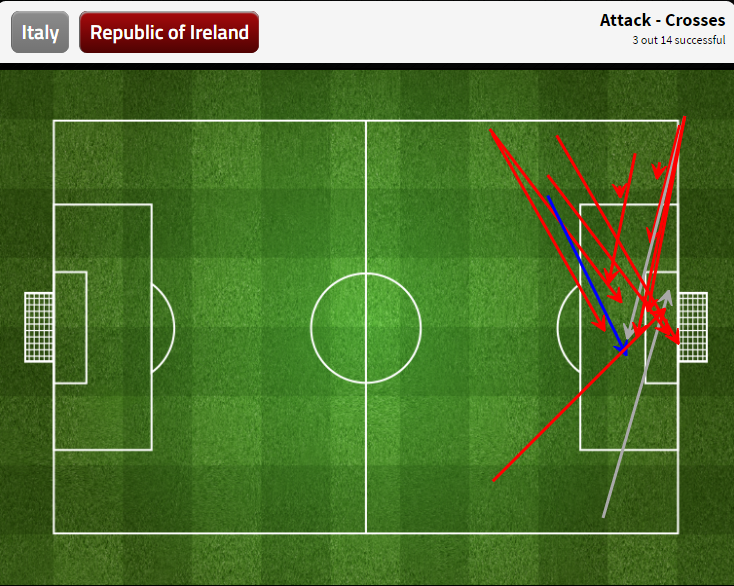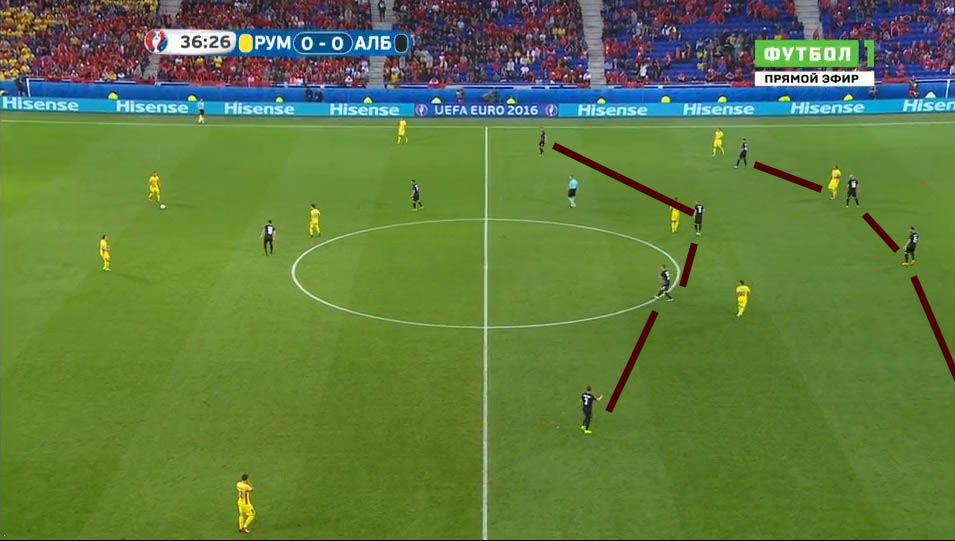Sometimes you lose a game, because you are unlucky, and sometimes because you are inept. That is the short story of a long hard fought battle Croatia and Portugal played in last 16 match at EURO. Having 17 shots and not a single one on goal, might be unlucky in some cases. It might also mean that one of the sides basically didn’t know what it was doing. Or whatever it was trying, was trying the wrong things. As the stakes are huge in knock out stage both teams came on the pitch determined not to get caught in possession allowing easy chances. They were both disciplined in defence and applied little to no pressure on opposition defence line. Initially, in possession, Croatia was looking for long balls from defensive line to Ivan Perisic who seemed a good target for such approach with his 1,87 m against 15 centimetres lower Southampton right back Cedric.

However, this didn’t work well as Perisic was quickly crowded out by Portugal defence or there were not enough Croatia players to pick up the flick-ons and profit from this mismatch. Combined with these high balls to Perisic, Croatia was using every other possible occasion to channel the play down either wing as you can see in their 1st half offensive zone passing.

and Strinic didn’t go far enough to create overload in wide areas so Portugal dealt with them easily. Below you can see a good example of Portugal defence as the left winger Andre Gomes closes down Srna allowing Raphael to worry only about Brozovic Adrien Silva can position himself to pressure either Brozovic or Modric while Rakitic ‘s run is already under attention of William. Defensive line, in fact whole Portugal, is positioned as in defending schoolbook and they indeed played team defence throughout the game.


Portugal was all to happy to defend and was fairly successful doing so. While Croatia had to change something as they had the ball but nowhere near danger zones, Portugal had to wait and react. And indeed Croatia came out of dressing room more eager to do something. For the beginning they started employing much higher pressing. Thing we have seen in the game against Spain that gave them few chances through balls recovered higher up the pitch and that cost them the goal after poorly executed pressing on Spain defensive line.
Additionally, Srna and Strinic pushed forward while Perisic went more central, although still in left wing slot. Despite this more aggressive approach, Croatia still remained true to their long diagonal balls from Corluka or Modric for wingers to get into dangerous position. Not surprisingly, in second half they had the same number of long passes as in the first half when they tried it 26 times. This says that despite more aggressive full backs the main game plan that produced only three low quality shots didn’t really change. You can see below how Croatia is still unwilling to use most dangerous zones of pitch.

What changed was number of crosses that Croatia doubled in the second half. The result was again the same and lot of low quality shots were made resulting with more frustration.
However, really significant change came from Portugal. As Croatia went for more dubious quality pressing, suddenly spaces opened for Portugal. Their passing went more direct, in a way as a result of higher pressing that made for rushed clearances. However, as this pressing often wasn’t executed well, it offered better quick long passes. Noticing this, Fernando Santos made two crucial decisions. He put in 18 year old Renato Sanches and changed his shape from 4-4-2 to 4-3-3 with wide wingers Nani and Qaresma. While Sanches was disrupting Croatian game with his physical presence wide wingers occupied vacated spaces of Croatian full backs that pushed up.
The second half situation is really best illustrated by comparison of Portugal offensive passes during 90 minutes of the game. You can see that in first part of the game Portugal was focused mainly down the flank where Cristiano Ronaldo was dropping deeper. Even those passes that came from right were largely aiming at him. However, the second half debunks the idea of Portugal as only one man team.

If you look at above diagram you will notice two things. Most obvious shift of point of attack to the right. This is due to more attacking play of both Croatian fullbacks, but also as targeting the weakest link in Croatia, Lazio reserve Ivan Strinic. The other important change compared to 1st half is the nature of passes. Suddenly there are a lot more of direct long balls into central and wide areas. This, however is due to Croatia poor pressing and great reaction from Fernando Santos who changes shape and uses whatever Croatia was giving him.
In the end, the goal came after Strinic was caught in possession deep in the Portugal half and again the man of the match, Renato Sanches, pops up to run whole length of field before passing to Nani on the edge of the box.
To conclude, the key to the game was Croatia and it’s stubbornness to (poorly) use the wings abandoning the centre of the pitch despite the obvious talent there. As an effect of this, Portugal coach makes change in shape and uses strong Renato Sanches to disrupt that little movement of ball in the middle that Croatia made. Also, Cristiano Ronaldo finally playing disciplined game for the team. As a last words… No doubt this was adaptive Fernando Santos’ winning over stubborn one dimensional Ante Cacic.
Thanks for reading!















